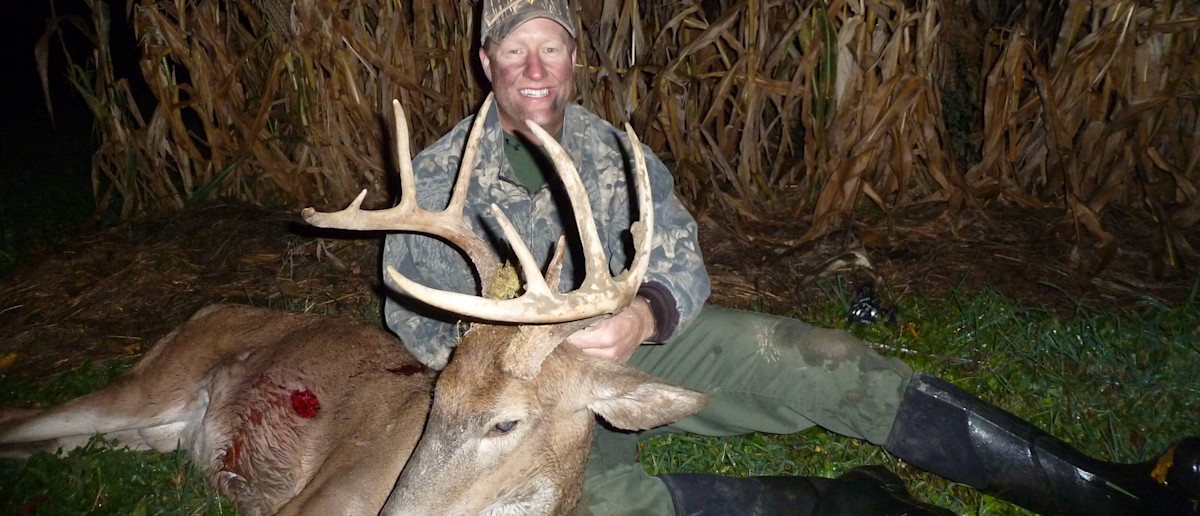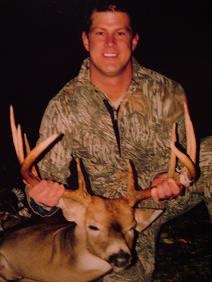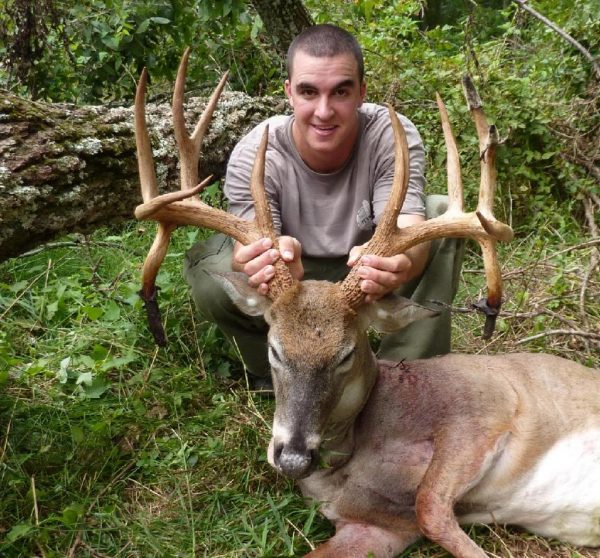
By Andy May
With many whitetail seasons beginning across the country hundreds of thousands of hunters are anxiously chomping at the bit to get in a tree stand. I sure am, as opening day is my very favorite time to tag a mature buck. But if you’re heading out for an early season hunt, you better have a plan in place if you expect to be successful. Going to your favorite tree stand just because you killed a big buck there in 1999 might not be the best move.
When it comes to the early season, I look for three main things when trying to track down a mature buck. The following three scenarios highlight those things and demonstrate how three hunters took mature bucks utilizing those very strategies.
1. Secluded water holes: One of the first things experienced hunters think of during the warm early season is water. Water is obviously a huge draw to deer in general during the warm months, but why do so many hunters fail to capitalize at water sources? I believe it boils down to a couple reasons.
a) Location: The location of the water source will dramatically affect the value of it when it comes to mature buck use. For a mature buck to visit a water source in day light during the early season it must be located somewhat near his bedding location or in cover where he feels secure moving in daylight. Mature bucks in pressured areas simply don’t travel far from their bedding throughout the early season. A water source located close to the buck’s bedding location allows him to feel safe getting up a bit early for a drink. The tricky part is accessing the water location so the set-up has to be extremely well thoughtout and the bedding location (if close) has to be known from previous scouting efforts. The second reason is…
b) Thermals: There tends to be a lot of thermal activity around water. As the thermals begin to fall in the evening your scent will actually get sucked to the water source unless there is a strong enough wind to overpower the thermals.
Setting up 40-60 yards could be the wrong spot if the winds are light and variable and the trail to the water is in between your stand and the water’s edge. A lot of the thermal activity around water depends on the size of the water source and flow (if any) of the water, as well as the outside temps and how much they fall at dusk. Setting up snugged right up against the water could actually help you stay undetected in the case of light/variable winds and falling thermals.
Another safe option would be to set up off of the water a good ways and hunt the corridor leading to it while playing the wind accordingly. I hunt a spot along a river bottom where my tree stand is directly on the water’s edge. It has a slow flow to it that tends to pull my scent away from the tree in the direction of the current. As the sun goes down the air cools much faster than the water causing a thermal effect of rising air above the water and cool surrounding air being sucked to the water. The experienced hunter that learns the ins and outs of the wind can capitalize on this and have a virtually bullet proof stand set up if the conditions are right. Again, use your wind detectors to see what your scent stream is doing.
Mike Lackman killed this great Michigan buck at a secluded water source near the buck’s primary bedding area.
2. Glassing Open Country: Probably one of the most effective ways to get on a mature buck early in the season is to spend time glassing your hunting areas from a safe distance. Depending on where you are in the country this may or may not be an effective technique. In the rolling hills of the Midwest it can be a dynamite tactic. In a big woods setting this may not be very realistic. Identifying a buck that meets your requirements is step one, followed by ample time glassing to locate and hopefully establish a short early season pattern that you can capitalize on.
I have had a few opportunities to hunt in this type of scenario but the high hunting pressure of Michigan doesn’t bode well for mature bucks moving in open areas during daylight. I have however begun to seek out these places of lower hunting pressure on my early season out-of-state ventures. While glassing a target buck pay attention to where he exits cover, wind direction and what time. He will likely be using wind, thermals or even other deer to his advantage to check the area for safety. If you see a weak link in his route, now is the perfect time to move in for the kill.
Luke Muldoon was able to glass this beautiful drop tine buck all summer and establish a consistent pattern right before the season opener.
3. The Bed Hunt: This one is pretty straight forward but may take the most discipline and preparation. The best time to locate buck beds, in my opinion, is immediately after the season or snow melt. During this time sign from the previous year is most visible and the vegetation hasn’t greened up yet. Beds will be very visible but you have to know where to look. You will find them in similar areas across the country depending on the habitat. A few examples of text book buck bedding would be river bends in river bottom areas, points along the transition line and islands in marsh/swamp areas, points in hill country and bowls/humps/clumps of cover or trees in CRP/open country.
By locating the beds you can see where the bucks spend the majority of their time in daylight and also where they will most likely move during actual shooting light. Many beds are wind based, so observing which way the bed is facing will often tell you what wind that bed is used on (bucks prefer to bed with the wind to their back). If you plan your access and stand location accordingly you stand a good chance at that buck. Depending on hunting pressure you may be able to stay 100-200 yards away from the bed and still get action or it may require a setup within 50 yards in higher pressure settings. A mature buck will have a secure area near his bed where he feels comfortable moving in daylight. The trick is penetrating this area, undetected. Many of the best hunters I know rely on this method of hunting. This style takes a lot of trial and error to become effective at but there may not be a better way to consistently get on mature bucks year in and year out.

Andy May was able to take this buck on the Michigan opener after locating his bed the previous spring along a creek. He then checked the adjacent food source just prior to the opener and was able to locate his tracks indicating that he was indeed still using that bed.







